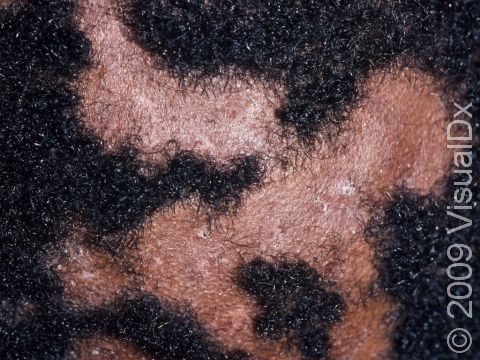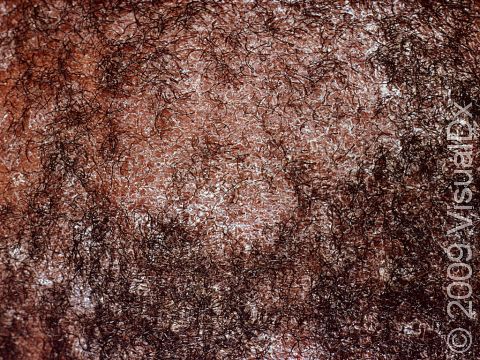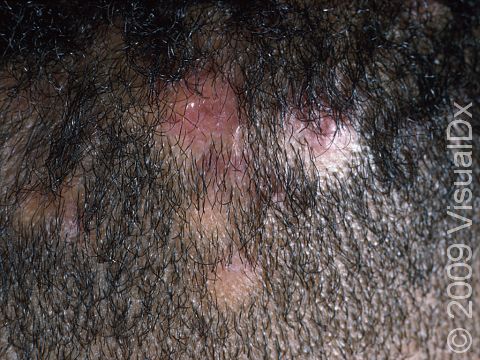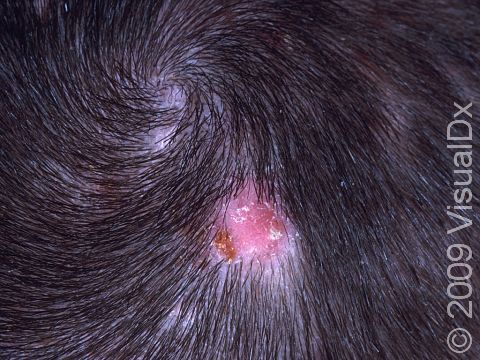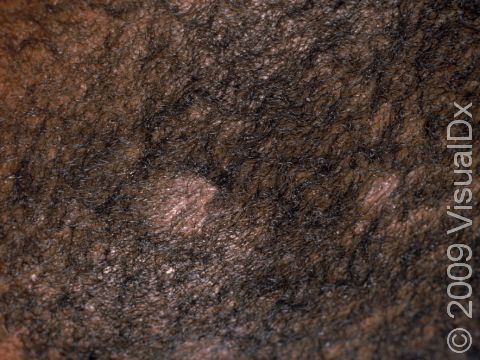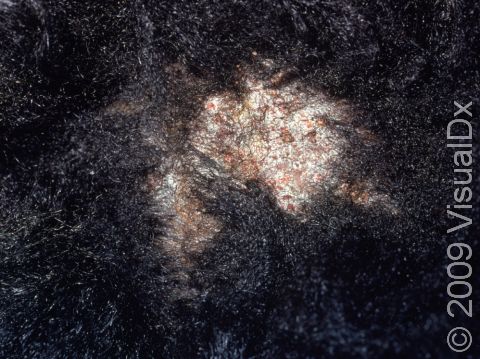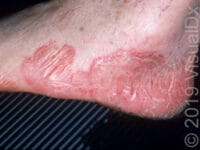
Ringworm, Scalp (Tinea Capitis)
Tinea capitis is the medical term for ringworm, a very common fungal infection, of the scalp. Despite the name, there are no worms involved in scalp ringworm, rather the rash forms a scaly, round patch that sometimes clears or improves in the middle, thus looking like a ring. Ringworm can occur on other parts of the body, but scalp ringworm is commonly seen in children. It is contagious and is acquired by contact with infected people, animals, or objects (such as towels, combs, and pillows). Scalp ringworm should be treated (by a prescription medicine your doctor can prescribe) because it is contagious and because, if left untreated, the affected area can develop hair loss and sometimes another, more serious, infection called a kerion.
Who's At Risk?
Anyone can get scalp ringworm, though it is most commonly seen in children under the age of 10. In the United States, African American children are more likely to have scalp ringworm than others. Boys are more commonly affected than girls.
Signs & Symptoms
The most common locations for scalp ringworm include:
- Scalp
- Eyebrow (rare)
- Eyelash (very rare)
Scalp ringworm appears as one or more round to oval areas covered with gray scale and is often associated with hair loss. The patches may be red and inflamed, and small pus-filled bumps (pustules) may sometimes be found. Also seen on the surface of the scalp may be tiny black dots, which represent broken hairs.
The lymph nodes at the back of the scalp, behind the ears, or along the sides of the neck may be swollen.
One complication of scalp ringworm is a kerion, a large, oozing, pus-filled lump. If not treated aggressively, a kerion can lead to scarring and permanent hair loss.
Scalp ringworm is usually itchy.
Self-Care Guidelines
There are no effective self-care measures to treat scalp ringworm.
In order to prevent scalp ringworm, be sure to avoid close contact with infected people and pets. Do not share combs, brushes, hats, and hair accessories with friends.
Treatments
In order to confirm the diagnosis of scalp ringworm, your physician may wish to scrape some surface skin material onto a slide and examine it under a microscope. This procedure, called a KOH (potassium hydroxide) preparation, allows the doctor to look for tell-tale signs of fungal infection.
The doctor may also wish to perform a fungal culture in order to document the presence of fungus or to discover the particular organism that is causing the scalp ringworm. The procedure involves:
- Plucking a few hairs from involved areas of scalp
- Rubbing a sterile cotton-tipped applicator across the skin to collect scale and any pus
- Sending the specimen away to a laboratory
Typically, the laboratory will have results within 2â3 weeks. In some cases, the laboratory is able to identify the species of dermatophyte that is causing the scalp ringworm.
Occasionally, a Wood’s lamp is used to look for the fungus. In this exam, the doctor shines a black light at the scalp, and certain types of dermatophyte may appear as yellow-green fluorescent spots.
Scalp ringworm is treated with oral antifungal medicines because the fungus invades deep into the hair follicle, where topical creams and lotions cannot penetrate. Scalp ringworm usually requires at least 6â8 weeks of treatment with oral antifungal pills, including:
- Griseofulvin
- Terbinafine
- Itraconazole
- Fluconazole
- Ketoconazole
Often, the doctor will also prescribe a medicated shampoo to reduce the risk of spreading the infection to someone else:
- Selenium sulfide shampoo
- Ketoconazole shampoo
Occasionally, untreated scalp ringworm seems to resolve spontaneously when a child enters puberty.
Visit Urgency
If you have hair loss or itchy, scaly spots on the scalp, it is probably a good idea to make an appointment with a physician.
If a sibling, classmate, or friend is diagnosed with scalp ringworm, make sure you examine your own scalp to look for scaly spots. If you are suspicious about an area, see a doctor for an examination.
If you are diagnosed with scalp ringworm, make sure any household pets are evaluated by a veterinarian to be certain that they do not also have a dermatophyte infection. If the veterinarian discovers an infection, the animal should be treated.
References
Bolognia, Jean L., ed. Dermatology, pp.1174-1185. New York: Mosby, 2003.
Freedberg, Irwin M., ed. Fitzpatrick’s Dermatology in General Medicine. 6th ed. pp.645-646, 1993-1995, 2443-2446. New York: McGraw-Hill, 2003.
Last modified on October 10th, 2022 at 8:04 pm

Not sure what to look for?
Try our new Rash and Skin Condition Finder
